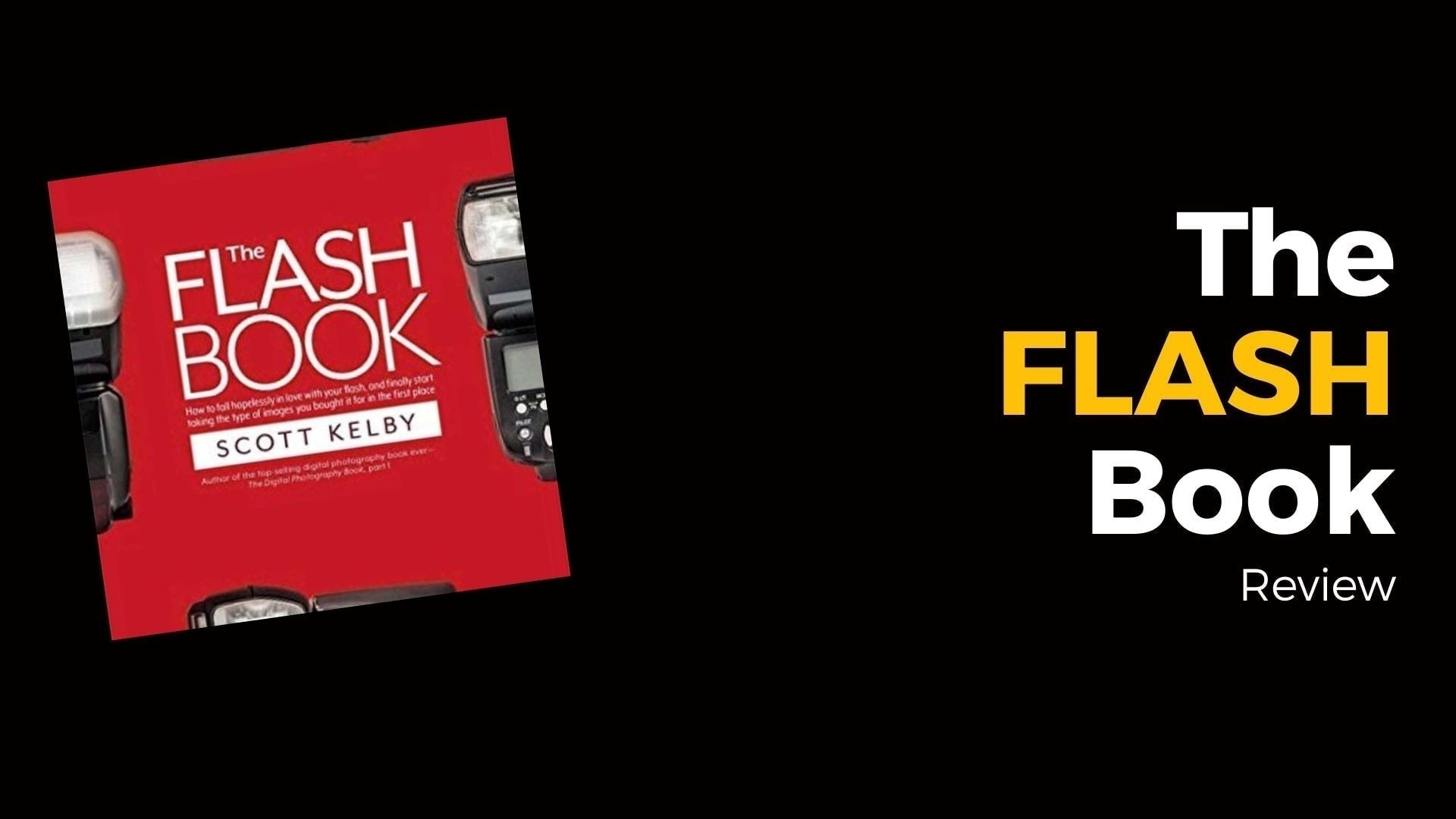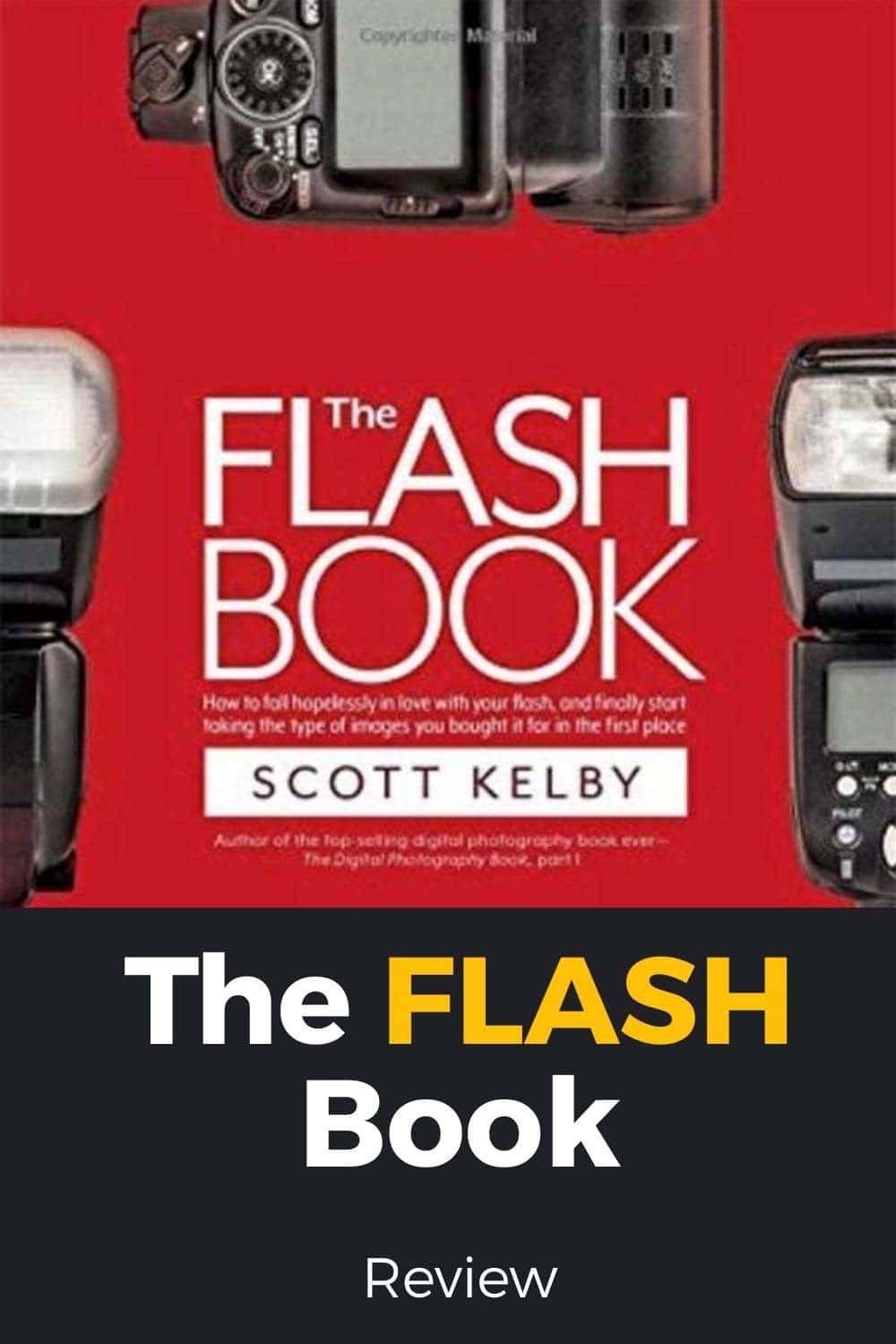
The Flash Book by Scott Kelby starts off with a premise. You’re not going to learn everything about flash photography in this book (though it covers quite a bit). The intent here is to teach you a pretty simple system to get you up and running with your small flash.
You won’t need a light meter, have to do a lot of math, or anything complicated. As I said, it’s simple. This book is for you if you struggle to understand how to use your flash and get desirable results.
Bear in mind that this is a “how to” book. You won’t find much discussion about the nature of light or its characteristics. For that, please read my Book Reviews by Joe McNally.
Flash beginners, start here.
The Flash Book helps beginners understand the concepts of applying flash photography, and it does a great job of getting you up to speed. You don't just follow instructions.
Scott helps you understand why things work so you can make independent decisions with your unique photos. Some readers complain about Scott's style of humor used in his books, but his information is solid and reliable.
Each page covers a single topic, so you can find what you’re looking for fast, and Scott’s casual style makes it easy to understand and apply his techniques.
- Scott makes it insanely easy to understand and use flash
- It doesn't include theoretical discussions about light
- Includes plenty of tips for different flash techniques
- Some may not like the humor
- It doesn't include theoretical discussions about light
Why I Wanted to Read The Flash Book
I’m not a flash beginner.
The target audience for this book seems to be for people who bought a flash, but never really use it. The book succeeds here, as the system is easy to understand and it’s effective. If you can read and operate your camera, then this book will show you how to use your flash to create better photos.
Yet there’s a lot of information here that’s worth a look even if you consider yourself an intermediate flash user or more. Beyond the basic system, Scott provides a lot of lighting recipes and plans for various lighting scenarios. It makes for a great reference for those situations you don’t face often and need to have a handy resource to help.
The reason that I bought the book is twofold:
- Flash photography is a big part of the work that I like to do
- I always learn something new from one of Scott Kelby’s books or presentations
Scott does an excellent job of breaking down complex information, discarding the pieces you don’t really need, and relating the information to you as if he were explaining it to a friend.
Unlike some other introductory books about flash that I’ve read, there’s no mention of the Inverse Square Law. Photographers inevitably get that wrong, and that irks the scientist inside me.
Despite being rather comfortable using flash, I don’t know everything. I’m also open to new ways of going about photography, and Scott’s system provided me another way to get the same results without much hassle.
The War Between Manual and TTL Flash Photographers
There’s a chapter in The Flash Book that I found really interesting. The title says, “Why TTL Might Be Making You Hate Your Flash.” Now that’s an intriguing notion because there’s a lot of truth in it.
Through the Lens (TTL) metering, your camera can adjust the flash power automatically. It sounds good (and I think it is), but it’s not without some controversy.
As Scott points out, TTL may give you different values from shot to shot. That can be very frustrating, especially if you don’t know that it’s happening. Imagine completing a shoot and not discovering that the exposure was different on each shot. Some of your favorite moments could end up unusable if TTL gave you the wrong flash power output.
If you want to know why this happens, check out the Lessons Learned section of my review of Joe McNally’s book, Sketching Light.
For most people, though, TTL is more trouble than it’s worth, even if you understand why it changes from shot to shot. That’s why Scott recommends using Manual mode in his system. You get consistent flash output from one shot to the next, until you decide to change the output.
The Age of Wireless Flash
I’m a Nikon guy, which means that most of my experience with small flash used the Nikon Creative Lighting System (CLS); a line of sight method of communicating between flashes. You need to send a signal from your camera, using either a flash or a flash controller, to other off-camera flashes.
Line of sight means that each flash must be able to see the pulse of light from the controller. If you want to hide a flash behind something, it doesn’t show in the photo. It may not fire because it can’t see the controller’s light.
Technically, this is wireless flash.
I’ve seen many demonstrations of this technology and I had good results when I worked within the limitations of the line of sight requirements.
Sometimes I want to hide a flash, though.
Light doesn’t go around corners, but radio transmissions have no such limitations. Scott’s advice is to avoid optical communication like CLS and go with a radio wireless system.
Not just any wireless trigger, though. Get one that allows you to change the flash settings from the transceiver. You could walk over to each flash and change the settings when you need, but that takes time. Working with a transceiver that allows you to make adjustments from your camera can save a lot of time and allow you to concentrate on your subject – not your gear.
Plenty of Useful Tips and Information
Scott covers all the fundamental bases in The Flash Book, and that’s just in the first chapter.
Once you have your flash configured and you understand the system, Chapter 2 delves into manipulating your flash output using bounce cards, dome diffusers, or setting the width of the beam. He also covers how to freeze motion or get a nice bokeh background while using flash.
When we get to Chapter 4, that’s where the book transitions from configuring your flash and understanding the fundamentals to using it in practical applications. Scott shows how to use off-camera flash for portraits in this chapter.
In Chapter 5, he discusses issues you’ll face in location lighting. You know, the scary places in the real world that don’t have the forgiving patience of a studio or your basement. It’s where most of your interesting flash photography happens, anyway.
The lighting tips and recipes continue, including everything from how to light a background to where to find a decent canvas backdrop for about $100, when they usually sell for thousands. Thanks to this tip, I found a great canvas about 9×20′ for $100.
You’ll find information about accessories and light modifiers, using gels, managing multiple flashes in groups and much more.
For a relatively inexpensive book, it has a plethora of helpful information and indeed shows you how to use your flash. Even getting into technical issues like a stroboscopic flash, pan blur, and freeze effects, and valuable tips like removing reflections from glasses.
As I said, The Flash Book has more information than just how to get started. It’s a handy “how to” resource for any flash photographer.
A Book That Transforms Your Flash Photography
When I review educational material, I’m looking for a transformation. You should be able to do something that you didn’t know how to do before or understand a concept that you didn’t get before you read the book.
The Flash Book succeeds on both counts. Not only does it take someone from an absolute lack of knowledge about flash and transforms them into someone who can comfortably use several techniques, it also explains the concepts of off-camera flash, so you understand why you’re using these techniques.
More than that, Scott explains what you should get in your results. When discussing how to use a softbox and where to position the light, he’s also discussing the result you receive from those directions.
Fortunately, the book isn’t weighted down by useful information. As I mentioned earlier, Scott doesn’t speak with the usual technical terms. All of the explanations are in a clear, easy-to-understand language so you can absorb what you need to know to achieve the results you want.
My Top 3 Lessons From The Flash Book
The Flash Book contains a wealth of information, yet the chapters are short and easy to comprehend. I truly appreciate how Scott communicates the essential information you need to use your flash.
1: Anyone Can Flash
Did you ever see the Pixar movie Ratatouille? The main character’s favorite book was “Anyone Can Cook.” Of course, the villain takes the opposite view – you must be special and have training that the average person doesn’t get. Anyone can cook? Nonsense!
The Flash Book is the photographic equivalent of Anyone Can Cook. It’s not that everyone will become a master of lighting, but you can quickly and easily start using your flash to get some really nice results using the lessons inside the book.
That puts you a cut above those who call themselves “natural light” photographers who think of flash as something artificial or inferior. They’re wrong. All light is natural, and understanding the information in The Flash Book will show you have to make the light look like it wasn’t lit by flash.
2: You Don’t Have to Spend a Lot of Money, But You Do Have to Spend Some
The good news is that money doesn’t improve the light from your flash. You can get a burst of white light from a cheap or expensive flash. What you pay for in those expensive flashes are features like TTL, build quality, and perhaps some other settings. The light is the same between them.
You need to spend your money on the things you put in front of the light. While those don’t have to be expensive, they can be. For example, you could spend $250 on a 36″ Wescott Rapid Box or $26 on a Neewer 32″ octa box. You may like the construction of the Wescott better, but can you tell a difference in the photo between the two?
3: A Lot of Classic Lighting Techniques Only Use One or Two Flashes
Most of my lighting setups use three lights. However, you can get many classic portrait and other lighting techniques using only one or two flashes. You don’t need to invest in a lot of lights to start. Just start with one. When you need another one, you’ll understand why and what role it plays.
Who Should Read The Flash Book
The Flash Book is a “how to” book for beginner to intermediate users. I think there’s valuable information and resources for some advanced users, too. However, the book’s purpose is to take you from 0 to 60 mph hour with your flash.
You aren’t going to drive your flash like a race car, but you’ll be comfortable using it as if you were driving your car around town. That’s precisely what most people need.
I’m thrilled to recommend this book to anyone who wants to start using flash or just get a bit more out of their current flash technique. For many of us, this is the only book you’ll need on flash to be proficient and happy with your flash.
You May Also Like
Check out another one of Scott’s books – The Digital Photography Book (2020).


